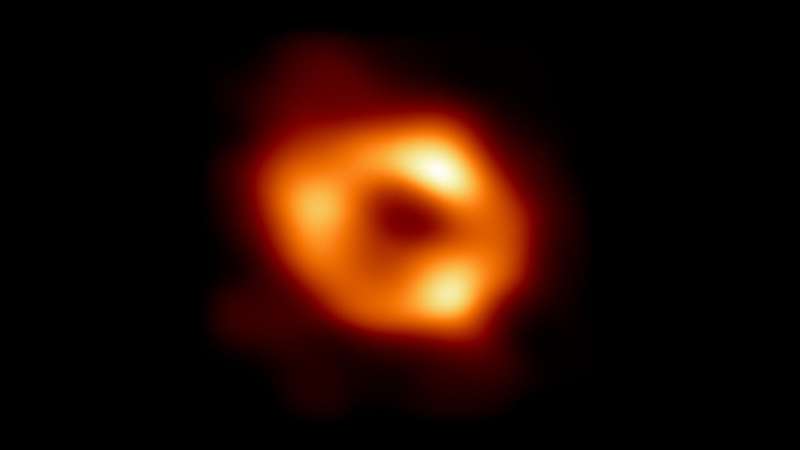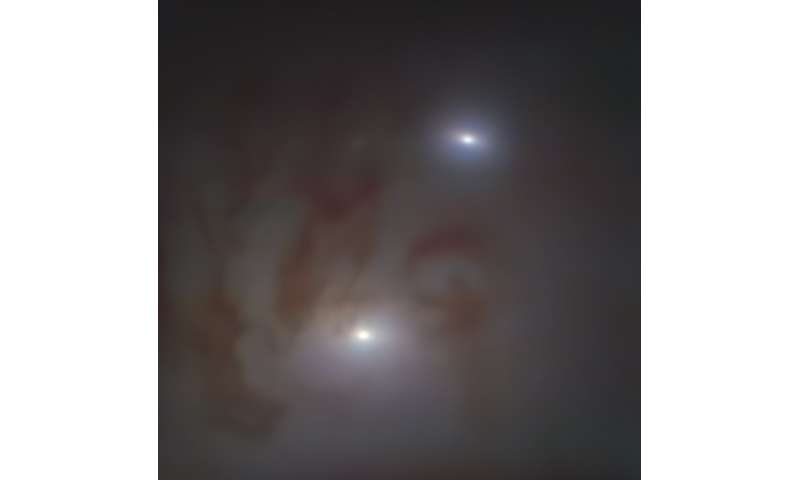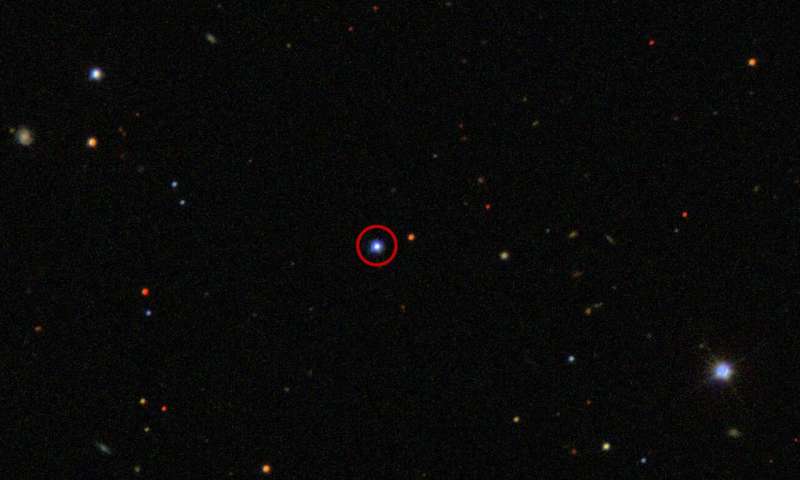This article has been reviewed according to Science X's editorial process and policies. Editors have highlighted the following attributes while ensuring the content's credibility:
fact-checked
trusted source
proofread
NASA animation sizes up the universe's biggest black holes

A new NASA animation highlights the "super" in supermassive black holes. These monsters lurk in the centers of most big galaxies, including our own Milky Way, and contain between 100,000 and tens of billions of times more mass than our sun.
"Direct measurements, many made with the help of the Hubble Space Telescope, confirm the presence of more than 100 supermassive black holes," said Jeremy Schnittman, a theorist at NASA's Goddard Space Flight Center in Greenbelt, Maryland. "How do they get so big? When galaxies collide, their central black holes eventually may merge together too."
In 2019 and 2022, a planet-spanning network of radio observatories called the Event Horizon Telescope produced, respectively, the first images of the giant black holes at the centers of M87 and the Milky Way. They revealed a bright ring of hot orbiting gas surrounding a circular zone of darkness.
Any light crossing the event horizon—the black hole's point of no return—becomes trapped forever, and any light passing close to it is redirected by the black hole's intense gravity. Together, these effects produce a "shadow" about twice the size of the black hole's actual event horizon.
The new NASA animation shows 10 supersized black holes that occupy center stage in their host galaxies, including the Milky Way and M87, scaled by the sizes of their shadows. Starting near the sun, the camera steadily pulls back to compare ever-larger black holes to different structures in our solar system.
First up is 1601+3113, a dwarf galaxy hosting a black hole packed with the mass of 100,000 suns. The matter is so compressed that even the black hole's shadow is smaller than our sun.

The black hole at the heart of our own galaxy, called Sagittarius A* (pronounced ay-star), boasts the weight of 4.3 million suns based on long-term tracking of stars in orbit around it. Its shadow diameter spans about half that of Mercury's orbit in our solar system.
The animation shows two monster black holes in the galaxy known as NGC 7727. Located about 1,600 light-years apart, one weighs 6 million solar masses and the other more than 150 million suns. Astronomers say the pair will merge within the next 250 million years.
"Since 2015, gravitational wave observatories on Earth have detected the mergers of black holes with a few dozen solar masses thanks to the tiny ripples in space-time these events produce," said Goddard astrophysicist Ira Thorpe. "Mergers of supermassive black holes will produce waves of much lower frequencies which can be detected using a space-based observatory millions of times larger than its Earth-based counterparts."
-

The two bright knots at the center of galaxy NGC 7727 each represent a dense group of stars surrounding a supermassive black hole. Only 1,600 light-years separate the pair. Astronomers expect them to merge within the next 250 million years. Credit: ESO/Voggel et al. -

Light from the supermassive black hole known as TON 618 (circled) takes more than 10 billion years to reach us. Credit: SDSS
That's why NASA is collaborating with ESA (European Space Agency) to develop their LISA mission, the Laser Interferometer Space Antenna, expected to launch sometime in the next decade. LISA will consist of a constellation of three spacecraft in a triangle that shoot laser beams back and forth over millions of miles to precisely measure their separations. This will enable the detection of passing gravitational waves from merging black holes with masses up to a few hundred million suns. Astronomers are exploring other detection techniques to tackle even bigger mergers.
At the animation's larger scale lies M87's black hole, now with a updated mass of 5.4 billion suns. Its shadow is so big that even a beam of light—traveling at 670 million mph (1 billion kph)—would take about two and a half days to cross it.
The movie ends with TON 618, one of a handful of extremely distant and massive black holes for which astronomers have direct measurements. This behemoth contains more than 60 billion solar masses, and it boasts a shadow so large that a beam of light would take weeks to traverse it.
Provided by NASA




















